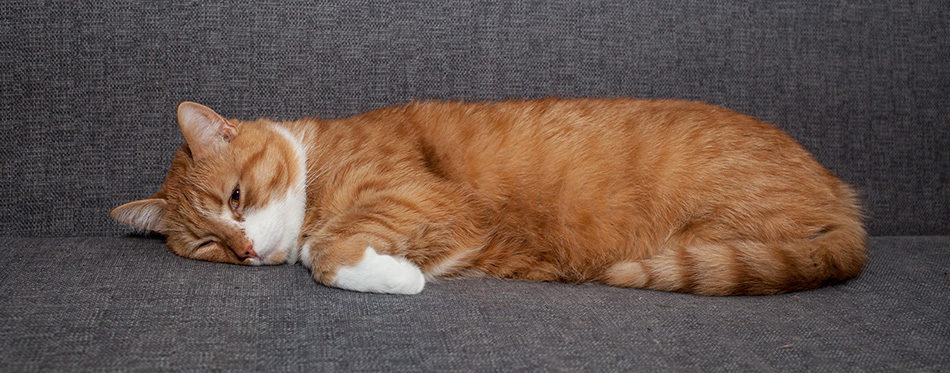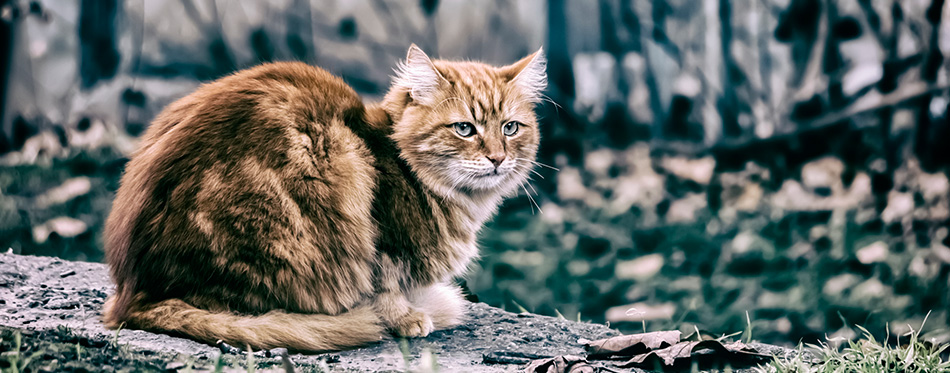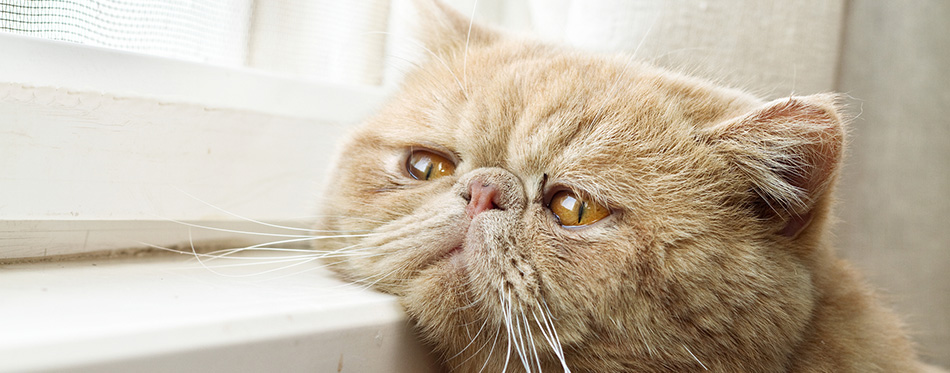Depression does not only affect humans, even the feline population is highly sensitive, and thus, they can easily react to environmental changes. It does not take much to trigger depression in cats, even something as negligible as a change in diet and litter box may give rise to anxiety. However, there are still serious situations like the death of a family member or relocations that can also make your furry companion to be sad. If you suspect your kitty is going through depression, this article will help.

Do Cats Get Depressed?
It has been established that the feline population can display depressive behaviors, but theirs is not on par with the emotional changes we experience with depression as humans. People can verbally express their depressive situations to the physician or psychologist; veterinarians are not so privileged since it is not possible for the cats to tell us how they are feeling, whether angry, sad, joyous, or anxious. The vet only relies on the cues the cat gives out through day to day activities and behaviors and base their assessment on that.
Signs of Depression in Cats
The signs associated with feline depression are quite numerous, so always pay attention to your furry companion in case she exhibits the following signs.
- Vocal cues: When a kitty is unhappy, they tend to give out some audible indications. These are referred to as unhappy noises, and usually, they come in a very low pitch and mournful yowls. Purrs are not always indicative of happiness, and a sad cat is likely to emit more purrs as a way of drawing comfort. Depression can make a normally vocal kitty become unusually quiet, while some that are known to be quiet may become noisy.
- Body language: This is another sign of feline depression; cats use different parts of their body to convey messages about their feelings. We have seen several ear, eye, body, and fur positions indicating different moods in our pets – tail tucked in, both ears held back, fur standing on end, and many more, constitute some form of silent communications that your furry friend is sad.
- Fear or aggression: Unhappy kitties have the propensity to be more reactive, acting with fearfulness and aggression. Behavioral changes that make a cat be unusually scared or aggressive is an indication that they may be unhappy.
- Hiding or clinging: Once a feline begins to lose interest in previously interesting activities that it loved to engage in, or hide and become reclusive, then depression is lurking in the corner. The ones that are naturally quiet have the tendency to become clingy as well as demanding. Besides, the natural feline’s fear of strangers will likely heighten with depression.
- Excessive sleep: It is normal for cats to engage in excessive sleep, but the situation is worse with depressed cats. Changes in the cat’s favorite nap location is also an indication of sadness.
- Poor Grooming: If poor grooming is not a sign of ill health, then it may well indicate depression. Sick cats or depressed ones may stop grooming, leaving their coats with unkempt looks.
- Loss of appetite: When a cat suddenly stops eating, it may be communicating its sadness about a certain something. Unhappy cats may show aversion to foods they are known to enjoy and are likely to completely lose interest when you want to entice them with their favorite treats. Find out more about healthy cat treats here.
- Spraying: This is a fault with unhappy cats; they leverage their personal scent to feel a bit better about a bad situation. They accomplish this by peeing in unsuitable places. Many reasons may be responsible for a cat to pee outside its litter box, but depression, stress, and unhappiness feature at the top of the list. You may find your feline friend peeing in high-value spots like your bedroom, lookouts, as well as areas where the scent of a missing family member lingers in a bid to spread its own scent.
- Excessive scratching: A sad cat is likely to start scratching anything in sight to mark her territory or relieve stress.

The Evaluation Process in Feline Depression
When accessing feline depression, a vet will commence the evaluation process by accessing a complete history of the signs and symptoms before proceeding to perform a full physical examination. They may suggest chest x-rays, blood work, as well as abdominal ultrasound. These are the baseline tests that will arm the veterinarian with an overall look at a cat’s general health and her organ function. What’s more, they may still recommend additional tests, but it is all dependent on the results.
Other tests that may be needed include MRI and spinal tap, especially when your veterinarian suspects a neurologic condition affecting either the brain or the spine. Tumors, infections, and inflammatory diseases affecting the kitty’s nervous system can give rise to significant behavioral changes. Changes that are direct effects of anxiety or stress may be quite hard to differentiate from the one that results from medical conditions; thus, you have to leverage the process of elimination until you get to a diagnosis.
If your furry companion’s bill of health happens to be a clean one, then the veterinarian may aid in identifying some external stressors that may be affecting the kitty. According to findings, stressors can give rise to depressive-like symptoms.
Though the members of the feline population are known to be resilient and independent, they are predisposed to anxiety resulting from the feeling of being threatened, experiencing alterations in routines, or the loss of a dear one, or even the addition of a family member. In fact, anxiety is on top of the list of the key behavioral conditions observed by vets. Chronic stress has been known to adversely affect a cat’s emotional stability and physical health condition. Aggression, self-induced hair loss, or changes in the cat’s usage of her litter box may be as a result of anxiety, and this is often the case.
Causes of Feline Depression
We have seen several causes of feline depression, but irrespective of the underlying reasons, give your furry friend extra attention and time until you see an improvement in their level of happiness. However, if the cause of depression happens to be pain, then it is time to visit the vet.
- Illness: Sickness has been identified as one of the causes of depression in cats. More often than not, an ailing cat will feel pain and, thus, will no longer be her usual playful self if it experiences pain with movement. The cat is likely to feel nauseous, reject their food, and experience hormonal imbalance or weakness as a result of sickness. Health conditions like; FIV, fatty liver disease, upper respiratory diseases, FeLV, hypothyroidism, diabetes, dental disease, and many more may affect your kitty’s happiness. If you conclude that the cause of your cat’s depression is sickness, then the attention of the vet is needed.
- Injury: Injuries always presented a form of limitation to your kitty’s ability to participate in activities that were formerly enjoyable, especially when the injury is accompanied by excruciating pain. Be sure to always go with the recommendations of the vet regarding pain relief. However, it is best to book an appointment with the vet so as to check it over. Sometimes, the source of discomfort and lingering pain might be old surgeries that may call for chronic pain relief.
- Loss of a loved one: When a family member is lost, it is usually tough for the people concerned, and your pets are not exempted. Once a family member relocates, or passes on, the family cat is likely to grieve, and fall into depression. This situation is not permanent as the cat will be able to return to its normal behavior with time. If the depression is a result of another household cat that left, you may solve the problem by bringing in a new family cat. However, we should apply caution while introducing a new feline friend too soon. This kind of depression is usually solved with time, but then, we have some natural remedies like nutritional supplements and pheromones that can aid your pet cat in feeling happier in the interim. You may also like our article on the best vitamins for cats.

Treatment for Feline Depression
It is possible to help an unhappy feline through entertainment and medication as both methods have proved effective in lifting a cat’s depressive mood.
Create a sense of routine: The entire feline population is averse to uncertainty; if their world happens to turn topsy-turvy, you can help them by restoring their recognizable routine. Imagine when a cat loses a loved one, their life will be fraught with a gaping hole – who will the kitty snuggle up to in the absence of its trusted companion? Cats feel anxiety that someone so familiar is no longer part of their lives.
A cat may perceive its new owner as being different when they don’t get their meals on time, and their coat remains without brushing. What do you think will be going on in the cat’s mind? That things are no longer the way they used to be.
When a cat parent gives them their food as at when due, brushes their coat regularly and makes out quality time to play with the cat, it goes a long way in reassuring the feline’s good mood.
Make a huge effort to keep to set schedule, interact with the kitty one-on-one by stroking and fussing over her. Clicker training comes in handy when your cat shows signs of withdrawal.
Mental stimulation: Mental stimulation can lift up depression to a large extent in both human and feline. Boredom is the number one environmental factor that can give rise to depression, causing your furry friend to sink into depression.
Avoid boredom: Mental stimulation is the panacea for boredom. Allow your kitty to benefit from expressing her normal behaviors like pouncing, hunting, and stalking. This has the capacity to ease frustration, which happens to be one of the factors that contribute to feline depression. Now the question is, how do you engage your kitty’s mind?
- Play – Dedicate five to ten minutes intermittently on a daily basis to engage your feline companion in a game. Get your furry friend swatting and swiping with games like a toy wing-on-a-string trigger. Don’t push the cat at the initial stage; you should try to be satisfied with small contributions like a lazy flick of her paw and then, you can build on that. For more options, check out our detailed review of cat toys.
- Mimic hunting activities – Hide some yummy treats around the home, and let the cat know where to find the first one, and lavish it with praises when she eats it. Lure it to the next one, and repeat the process; soon, it will be the one sniffing out the rest. Mimicking their natural hunting skills is great for a kitty’s mental health.
- Puzzle feeders – An old egg carton can come in handy as your simple puzzle feeder. Pour some little quantity of kibble into all the cups; it is now on the cat to move around to eat from all the cups. There are also some interactive puzzle feeders, which only releases kibble when your kitty uses its paws to bat the toy.
- High Perches – Cats just love heights; thus they are quite happy when you provide them with a high perch by the window-side where they can stay, and watch the great-outdoor. For a wider selection of choices, check out our cat window perch guide.
- Scratchers or scratching posts – Scratching is a natural behavior in the feline population, and getting a scratcher for your pet cat will help her in expressing this natural instinct. Place the scratcher at strategic positions like the door and beside their litter box. Draw the kitty’s attention to the scratching post by spraying it with Feliway. Scratching helps cats to feel more secure.
- Training – Yes, cats are trainable, and that wonderful one-on-one time with your feline friend engenders bonding and is a form of mental stimulation that can help the cat in fighting boredom.
- Medication – There are several cat anxiety medications, but they can only be prescribed by the vet. We have the likes of gabapentin, trazodone, midazolam, as well as alprazolam.
Source:
- Can Cats Get Depressed? – PetMD

